|
|
|
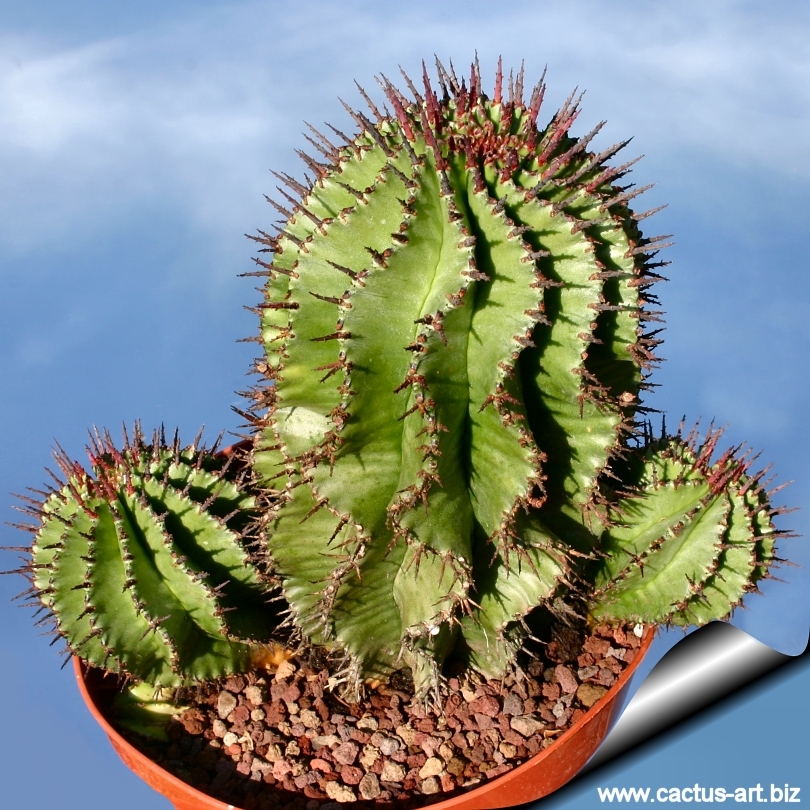
Euphorbia horrida hybrid
A delightful plant with green stems and red spines resembling a
cactus.
Due to it hybrid origin this plants are very variable and many different
forms are now in cultivation
|
|
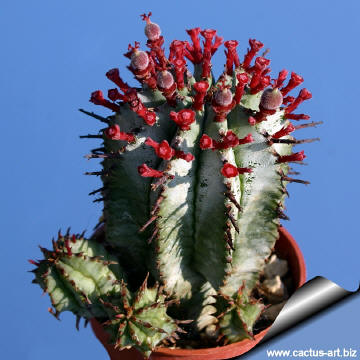 |
 |
|
|
|
|
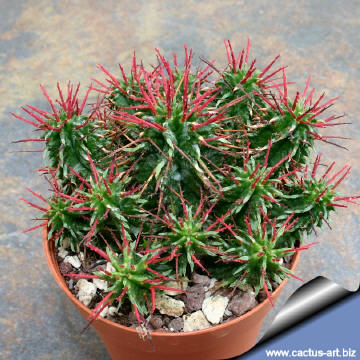
A small stemmed cultivar with bright red spines. |
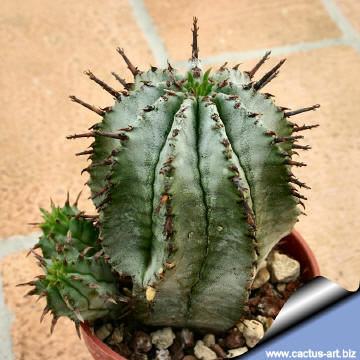
A grey stemmed hybrid |
|
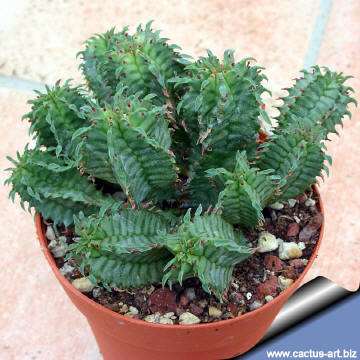
A mall blue/green form |
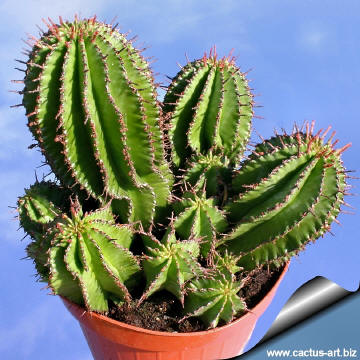
A huge cactus like type |
|
.
|
|
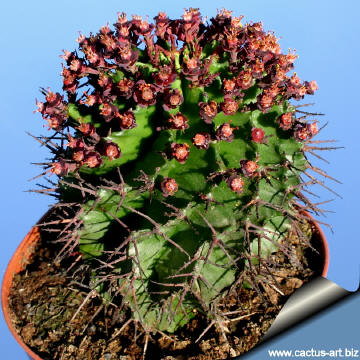
A red blooming specimen. |

close up to the flowers. |
|
Photo of conspecific taxa, varieties, forms and
cultivars of Euphorbia horrida.
|
|


Advertising
|
|
|
|
|
Family: Euphorbiaceae
Scientific name:
Euphorbia horrida hybrid
Origin:
Garden origin (Nursery
produced cultivar)
Common English Names include: African Milk Barrel
|
|
Description:
The hybrids of E. horrida are very common in
the trade and in the collections. This hybrids involves several
different species (often resulted from
accidental crosses) and are widely
propagated for their quality. They are a very strong
and easy to grow spiny succulent that looks a lot like an
American cactus and will readily form large clumps. They is
extremely
variable due to their hybrid origin and have many varieties and forms. Many
of the plants sold as E. horrida are
actuality hybrids. It
is however
very difficult to identify the species involved in this crosses and is
hard to tell apart the exact ancestors only by body characteristics.
Stem: Erect, cylindrical 3 to 150 mm thick, up to 75 cm tall.
Ribs: 6 to 20, usually wing-like, prominent.
Spines: Very variable in form, size and hardiness, usually ark purple
(quickly weathering to grey) 5-40 mm
long, they are actually the dried remnants of its flower stalks and are
very rigid.
Flower: Very small variable from yellowish-green to dark purple
blooms in spring and summer.
|
|
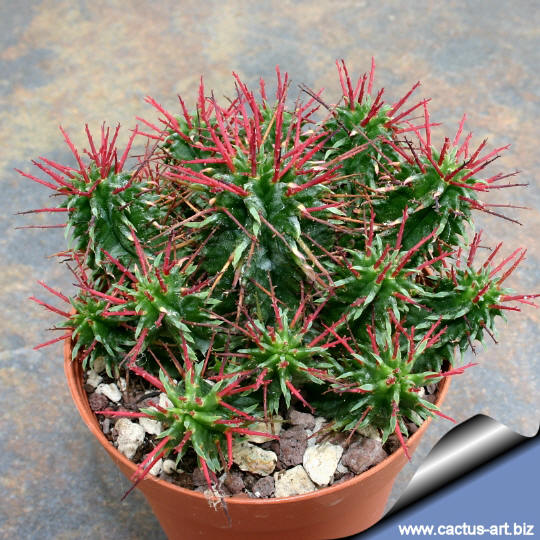
A small stemmed cultivar with showy bright red spines.
|
|
|
|
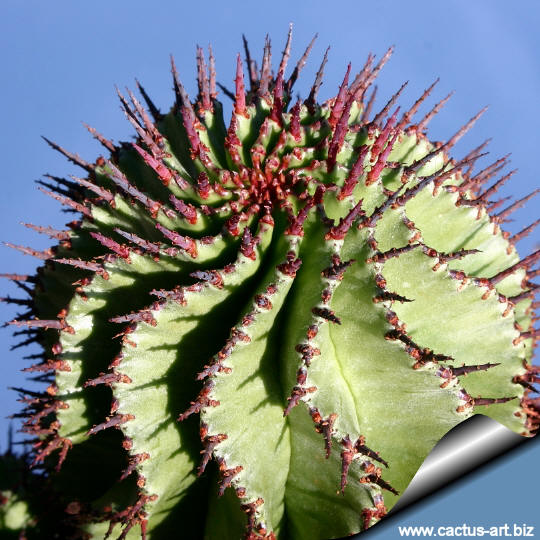
This beautiful plants are appreciated by
succulent growers for easiness of
cultivation.
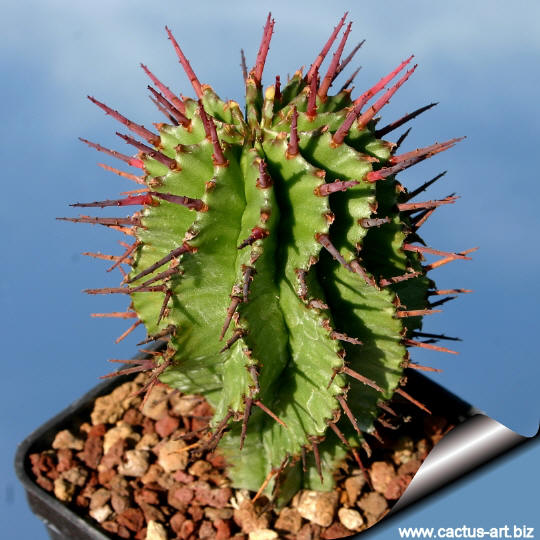
Cultivation:
It is a pretty easy plant, it grow well in a very draining mineral
potting substrate but it isn't picky about soil, the area where this
plant is native receives rains in both winter and summer, so it can be
watered moderately all year around (except in the coldest month of the
winter as it rot easily especially if over wet ) During the summer, they
enjoy average feeding and watering. Mature healthy plants are tough and
can also be grown out of where frost is not too severe , it can tolerate
temperatures down -4°C (-10° C if the roots are kept dry). It like Light
shade to full sun, but different clones vary in their tolerance of full
sunshine. The general rule is that the smaller and rounder the variety,
the less it can tolerate full sunshine.
Propagation: It is
propagated from seed sown during spring or summer. Germination occurs
within 3 weeks but it can be reproduced by cuttings (The larger forms
tend to branch enthusiastically and offsets are readily available) if
you remove an offset, remember to let it dry for a week or so, letting
the wound heal (cutting planted to soon easily rot before they can grow
roots). It is better to wash the cut to remove the latex.
Warning: As with all other Euphorbias when a plant get damaged it
exudes a thick white milky sap known as latex. This latex is poisonous
and may irritate skin, and pay extreme attention not to get any in your
eyes or mouth.
Cultivated plants must be handled carefully.
|
|